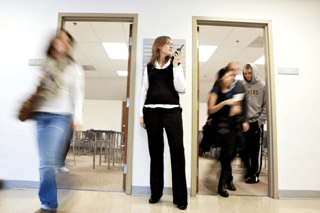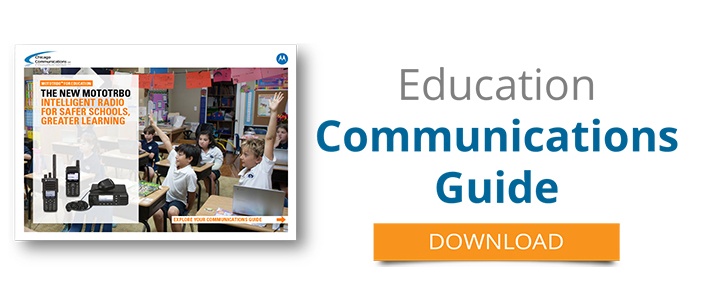Schools are changing. No, not just the curriculums they offer or the lessons they teach (though those are quite different today than they were even just ten years ago), but the ways in which they use technology to keep students safe, informed, and connected.
Today, many schools have adopted location services, a technology that operates off of a GPS-style system. Location services can be used for just about anything, from sending emergency updates and obtaining student locations to offering interactive campus tours and even notes and content. The benefits are clear, and with today’s students being supremely comfortable with all things technological, the rollout is widely appreciated and is something that students, staff, and parents can get excited about.
for just about anything, from sending emergency updates and obtaining student locations to offering interactive campus tours and even notes and content. The benefits are clear, and with today’s students being supremely comfortable with all things technological, the rollout is widely appreciated and is something that students, staff, and parents can get excited about.
Here are five ways your school can use location services:
1) Optimize Your Emergency Preparedness
While the more “fun” parts of digital location services are things like promotions and interactivity, emergency planning is the number one reason your school system should invest in this technology. Using location-based technology, schools are able to locate students and teachers during an emergency, based on movement or crowding. The key feature here is that location-based services (LBS) offer critical information (a bird’s-eye-view) of faculty and students when knowledge is most important.
The value of LBS is most clearly evident when a natural disaster strikes or a security threat enters the campus. Decision makers need to be properly equipped with the technology that gives them accurate information quickly, so they can act accordingly. More than ever, that’s exactly what schools and administrations are trying to do, and location services help them do it.
2) Enhance the Classroom Experience
Rewind just a few short years ago, and students were being disciplined for having their cell phone out in class. Today, a student’s smartphone is often part of the classroom experience, and can be used even for things like turning in homework, checking in for classroom attendance, and note taking.
Using Bluetooth Low Energy (BLE) Beacons and WiFi location technology, schools are able to deliver targeted content to an end-user (or send notes or slides directly to a student’s phone when they walk into the classroom).
3) Protect School Equipment and Restrictions
Also through the use of BLE beacons, school administrators can track the physical location of high-value assets like laptops, tablets, AV equipment, and even televisions. This bolsters schools' security mechanisms, as staff are alerted when a device (or other asset) has been moved or is taken near an exit.
While location services are typically thought of as a way to keep students safe, they can also play a big role in the protection of school equipment, which is increasingly valuable as schools adopt a variety of learning technologies.
4) Provide an Interactive Campus Experience
One of the most fun and helpful capabilities of LBS is that it provides interactivity on campus. This technology allows you to create and send detailed (and yes, interactive) maps to students on their first day of school, assisting them in finding their classrooms and other important campus locations. You can also use the maps to ensure parents and guests are well equipped to navigate the campus when they arrive for sporting events, conferences, or ceremonies.
In using location services to assist current students and parents, schools use location services to provide self-guided campus tours to prospects. Via Beacon technology, prospective students and their families can receive real-time, customized content directly on their mobile devices that explains the area of campus they are in and where to head to next. This is especially helpful for those students who simply can’t attend a student-led tour, ensuring they still receive a great experience when they visit.
5) Delight Your Students with Personalized Promotions
One thing that today’s students (especially those in college) value is saving money. They often make purchase decisions, like where to go for lunch, based on which restaurant is having a good special that day. As a school, you can improve that experience by sending relevant promotional information to students throughout the day, based on their location.
For example, when lunch time nears, students can receive an alert for the specials offered in the student union. Or, as finals are approaching, they can receive promotions for school supplies (and coffee) that they may want to stock up on. Whatever the case, this is an opportunity for your school to further interact with your students.
If you’d like to learn more about location services and how they can transform your school, contact Chicago Communications today or leave a comment below.



